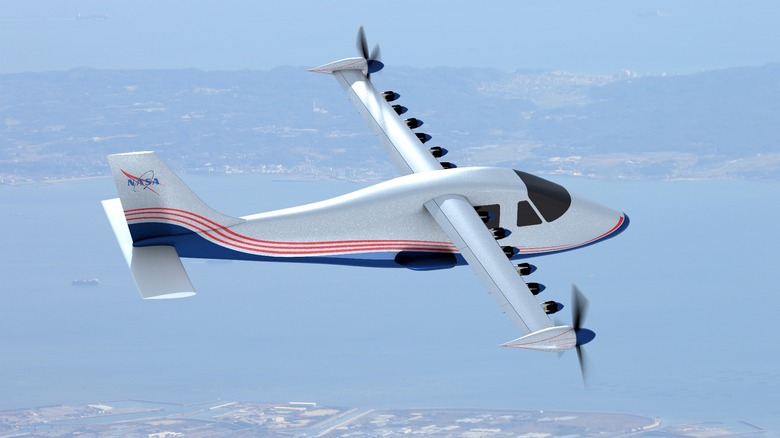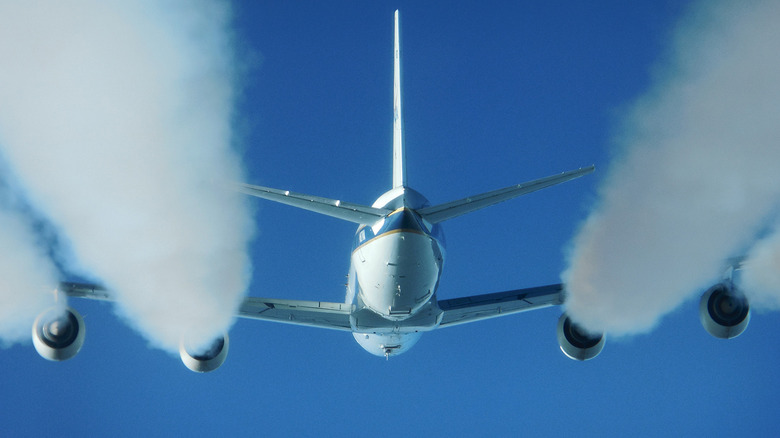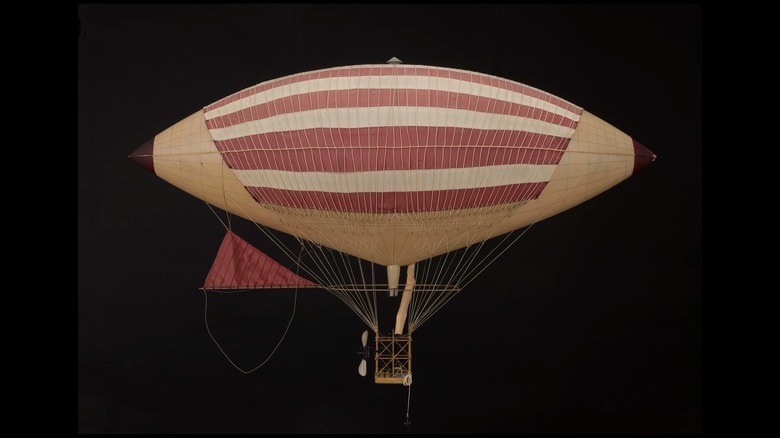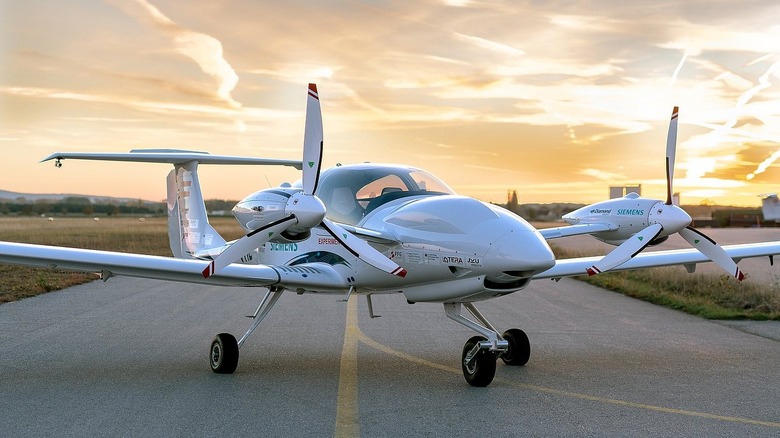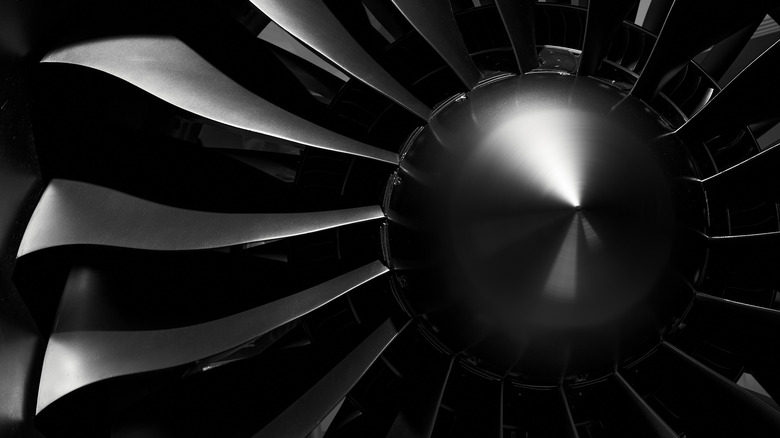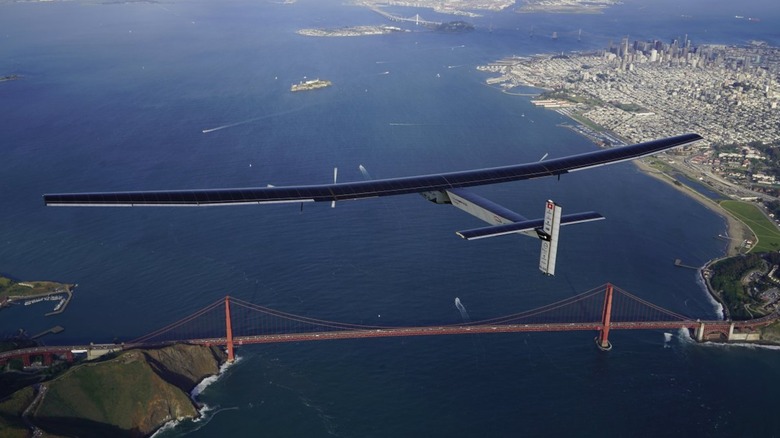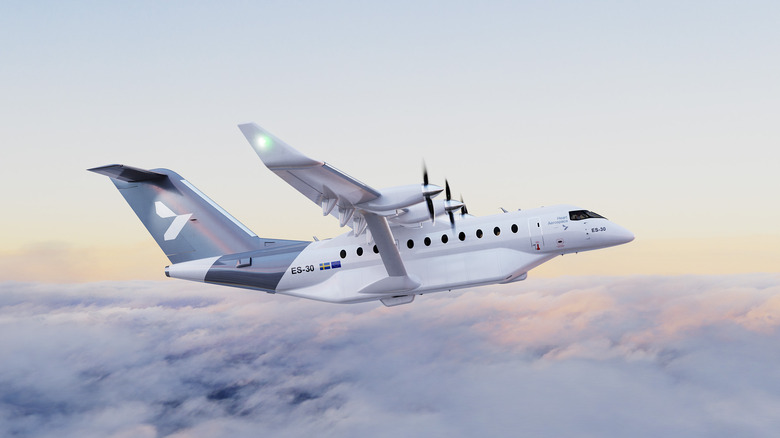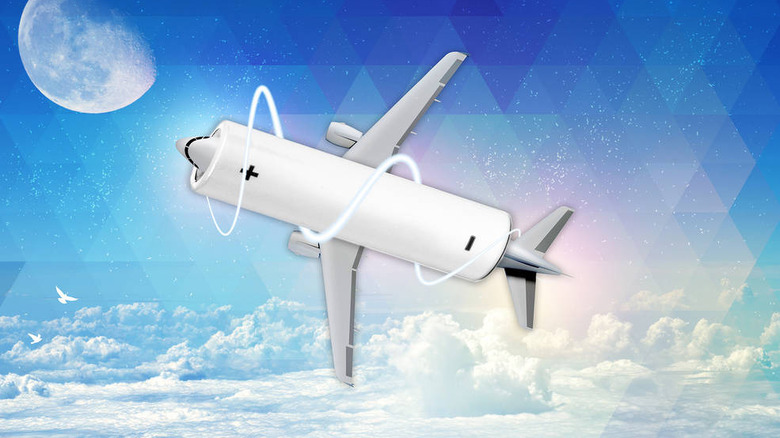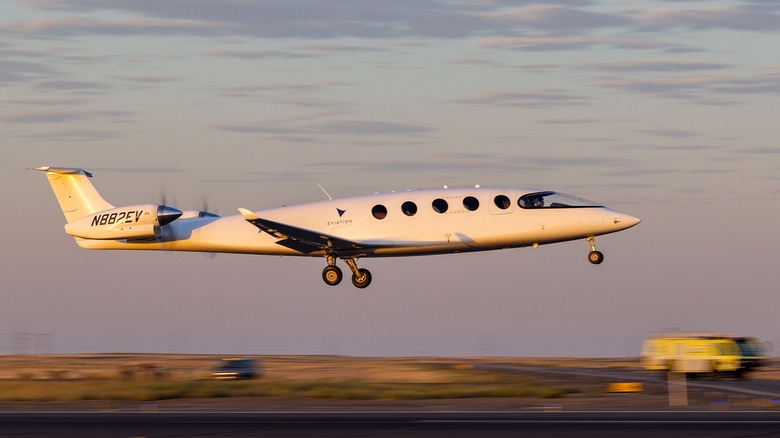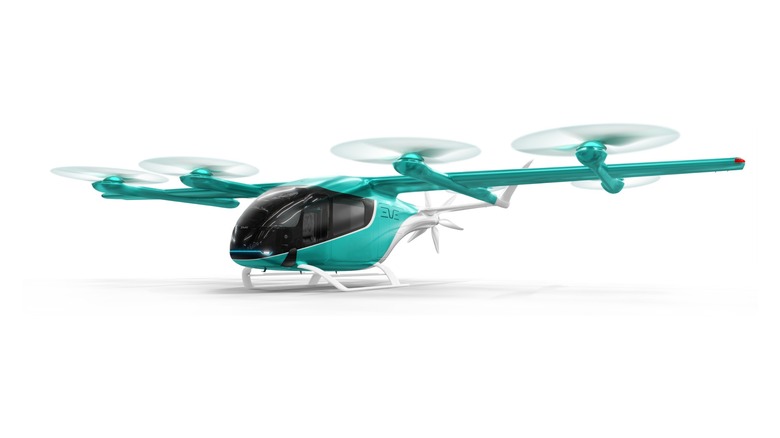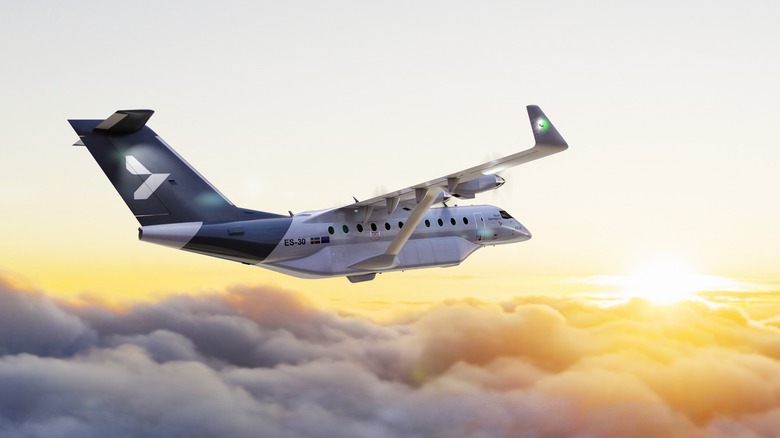Electric Planes: Are They Really The Future Of Flight?
Internal combustion engines have been the transportation technology du jour for decades, but the industry is due for a change. The electric revolution was slow to start but is now in full swing. Electric cars make up a sizeable portion of the automobile market, and that portion is growing. Last year, EV sales (including hybrid vehicles) increased 55% globally, accounting for roughly 13% of all vehicle sales.
Electric trains have been common for a long time, you can get your hands on an electric boat, and the FAA recently approved testing for the first fully electric flying car. Batter power is increasingly common on the ground, and it seems inevitable that electric power must eventually make its way into airplanes.
In fact, electric aircraft already exist, but their use is limited. Several challenges are standing in the way of fully-fledged passenger planes powered entirely by batteries, but those barriers are being overcome. Today, electrically powered flights are only accessible to a select few, but pretty soon, some of your flights are likely to be powered by batteries at least some of the time.
Inevitability and necessity
Transportation is one of the largest global contributors to greenhouse gas emissions and climate change. While cars create the lion's share of emissions, airplanes are responsible for about 3% of global greenhouse gas emissions every year. In fact, if you fly more than once or twice a year, flying is probably the most carbon-hungry thing you do.
It's also possible that the slice of emissions caused by aviation could go up. The Environmental and Energy Study Institute notes that access to air travel has increased dramatically in the last few decades. As technology continues to improve and the global population grows, we're likely to see even more planes in the air. That expansion in access helped make flying the fastest-growing source of individual emissions.
Reducing and ultimately eliminating airplane emissions is an ongoing endeavor being tackled on many fronts. In 2016, a United Nations panel crafted updated emissions standards for all new aircraft, and many airliners are already meeting or exceeding those standards. However, getting to zero emissions means ditching combustible fuel altogether, and that means going electric.
Early electric aircraft
Electrically powered transportation feels like a wholly modern invention, but that couldn't be further from the truth. In fact, the first electric aircraft predates the invention of the airplane by two decades. In 1883, brothers Albert and Gaston Tissandier developed and constructed an airship powered by primitive bichromate of potash battery cells. Those batteries powered a Siemens 1.5 horsepower engine, which turned a propellor. Their craft succeeded in taking off, flight, and landing, but the heavy batteries made the endeavor unsustainable.
A year later, Charles Renard and Arthur Constantin Krebs piloted their airship, dubbed La France, on the first of several controlled flights. The first flight covered nearly five miles in a loop over the course of twenty minutes, ending where it began. La France consisted of a balloon 167 feet long with a gondola suspended underneath, holding the engine, battery, and passengers. The motor and batteries had a combined weight of 800 pounds and turned a wooden propeller to move the ship.
While these flights proved electrically powered flight was possible, better technology just wasn't ready to carry us through the air quite yet.
Number of projects in development growing
It's not just that the total number of electric aircraft is increasing, but the number of players in the electric aviation space is also growing. While the field is still developing, it has seen dramatic and consistent growth in recent years, and the number of ongoing projects is on the rise.
Growth was pretty consistent from 2009 to 2016 when the first spike occurred. There was an approximate growth of 54% between 2016 and 2017, and that accelerated level of growth has remained more or less steady since then. Personal electric aircraft, popularly called air taxis, account for the biggest chunk of development, with general aviation coming in a close second.
In May 2022, Scientific American reported there were more than 170 electric aviation projects in progress globally, and that number has only grown. The International Civil Aviation Organization (ICAO) puts the number a little higher, estimating more than 200 electric aviation startups and over 300 electric aviation projects between 2016 and 2022. The precise numbers aren't really all that important — what matters is that tons of people (and more every day) are working to crack the electric flight challenge.
The energy density problem
Whether you're trying to move a car, a train, an airplane, or a spacecraft, energy is always the limiting factor. Getting an aircraft into the air and keeping it there takes a lot of energy, and aircraft engineers are always looking for ways to make planes more fuel-efficient. The trouble is, planes are heavy, and that's before you add in the crew, passengers, their luggage, and the weight of the fuel itself. Making aviation affordable enough for all of us requires getting a lot of usable energy into as small a space as possible. In other words, you want a high energy density.
Figuring out the energy density of a fuel or energy source is pretty simple. You divide the amount of energy available in the fuel by its weight to get the number of watt-hours per kilogram of fuel. Some of the best batteries we've ever created in the lab can crank out more than 700 watt-hours per kilogram, but even that pales in comparison to jet fuel's 12,000 watt-hours per kilogram.
While electric air travel is possible today, we're limited by the sheer weight of the batteries. Current technology can get us into the air, but we're going to need better and lighter batteries to keep us there.
Solar Impulse 2
The Solar Impulse 2 is an admittedly bizarre aircraft purpose-built to achieve its task. It was created by psychiatrist Bertrand Piccard, who completed a trip around the world in a hot air balloon in 1999. The Solar Impulse 2 was a way to up the ante by relying on solar electricity to keep Piccard in the air while he flew around the world again.
Piccard had to contend with the energy density problem just like with any other aircraft, but he got around it in a novel way. The plane needed to be large enough to host the required solar panels but light enough to stay in the air on minimal power. To make that happen, the Solar Impulse 2 was given a 72-meter wingspan supporting a craft weighing only 5,000 pounds. Nearly every inch of the plane's surface is covered in photovoltaic solar cells, more than 17,000 in total, which soak up sunlight and keep the propellors turning even when it's dark out.
After a series of test flights, Piccard set out along with his copilot, André Borschberg, on a solar-powered flight around the world. Their journey ended on July 26, 2016, when the duo landed in Abu Dhabi after 14 months of flying on the proverbial solar winds. Aircraft like the Solar Impulse 2 likely aren't the future of commercial electric flight, but they proved it was possible and did it with style.
Hybrid aircraft
The battery range problem is one that terrestrial vehicles had to overcome (and to some extent still are). One way manufacturers bridged that gap in the beginning was with hybrid technologies. Even today, hybrid electric vehicles offer improved battery range with the comfort of a conventional combustion engine. Some plane manufacturers are taking a similar path with their in-development aircraft by providing batteries to supplement conventional combustion engines.
Both Air Canada and United Airlines have signed up to purchase hybrid electric planes (30 and 100, respectively) from Heart Aerospace. The planned aircraft will be able to carry up to 30 passengers and go 125 miles (200 kilometers) on battery power alone. It can go roughly twice as far using a combination of batteries and liquid fuel. Heart Aerospace expects to deliver its first hybrid aircraft by 2028.
In the meantime, NASA is also pushing hybrid aircraft development through its Electrified Powertrain Flight Demonstration Project. The program hinges on collaboration between NASA and industry partners to modify existing aircraft with electrified aircraft propulsion (EAP) systems. The goal isn't necessarily to retrofit existing aircraft already in service but to accelerate the development of hybrid systems to power the next generation of airplanes.
Better batteries
At present, there is a considerable gap between industry-leading batteries and conventional liquid fuels. The 12,000 watt-hours per kilogram energy density of jet fuel is more than 17 times more efficient than the best batteries we can muster, kilogram for kilogram. That means if we want to fly with the same efficiency as conventional aircraft, batteries will have to get a whole lot more powerful or a whole lot lighter.
Lithium-ion batteries are the standard for most rechargeable electronics, but they have a physical upper limit to their energy density. That's because much of the battery is dedicated to heavy materials that facilitate energy transfer. Getting to a dramatically lighter battery might require an entirely new kind of battery technology.
Lithium-air batteries have garnered some interest because they replace some of the conventional materials with air, making the whole battery significantly lighter. However, lithium-air batteries have their own challenges, particularly in terms of conductivity and rechargeability, both of which are important for any good battery. It's estimated that lithium-air batteries could offer an energy density roughly twice that of existing batteries, and research into their development is ongoing.
Alice, the world's first electric passenger plane
This electric plane from Eviation, affectionally dubbed Alice, certainly isn't the world's first electric airplane, but it might be the first commercial plane to carry passengers. That's if it hits its 2027 launch target.
The Alice is capable of carrying up to nine passengers up to 250 miles between charges, according to Eviation. However, as is the case with all electric vehicles, the actual battery range in the field depends on several in-flight factors and could be shorter than the 250-mile maximum. With that in mind, the Alice is intended for shorter flights. Eviation has carried out many successful test flights recently, and the company has garnered multiple orders.
Regional airliner Monte has placed an order for 30 of the planes once they start hitting runways in 2027. More recently, the zero-emissions leasing company Solyu, based in South Korea, signed a letter of intent to purchase 25 planes with an option to double their order. Assuming everything goes according to plan, a few years from now, you might be able to rent a private electric jet for a day or buy a ticket for a short hop from a regional airliner.
Major airlines are onboard
United Airlines has committed to reaching carbon neutrality by 2050, a fairly lofty goal for a company whose industry relies on burning tens of thousands of gallons of fuel every day. Part of the company's plan includes investing in electric aircraft to supplement their existing fleet. In 2022, United Airlines made a conditional purchase agreement for 200 four-seat electric planes, which it hopes to have in the air by 2030. And it's not alone.
In October 2022, member states of the International Civil Aviation Organization (ICAO) agreed to the same goal of carbon neutrality by 2050. Crucially, that goal focuses on the actual reduction of emissions rather than offsetting emissions through the purchase of credits. However, there aren't any clear targets or binding obligations in the agreement. That said, several members are already taking steps to meet those goals.
In addition to United Airlines, Air Canada, American Airlines, Mesa Airlines, and others have all made agreements to purchase electric aircraft in the near future.
Looking down the runway
Electric planes aren't the future of flight; they are the present. There are electric aircraft in the air right now, and there are more of them every day. That said, it will probably be a while before you take your first fully electrically powered flight, and when you do, it will probably be in a small plane for a short trip.
Fully electric, long-haul passenger planes are likely inevitable on a long enough time scale, but based on current battery trends, they won't be coming down the runway anytime soon. In the short term, battery limitations are likely to continue, forcing a focus on smaller aircraft and shorter trips. In some parts of the still-emerging industry, that means focusing on very small electric aircraft intended for individuals, families, or small groups. Think of something closer to a flying bus than a passenger plane.
Many of these small electric aircraft are designed to take off and land vertically, like a helicopter, allowing for the potential of curbside pickup and drop-off. That quality also gives them their name, eVTOLs, which stands for electric vertical take-off and landing. While small eVTOLs hit the sweet spot for size and weight, they have several regulatory hurdles to overcome. Small passenger planes have the benefit of existing infrastructure alongside their small size. That middle ground makes them most likely to hit first, probably within the next decade.
